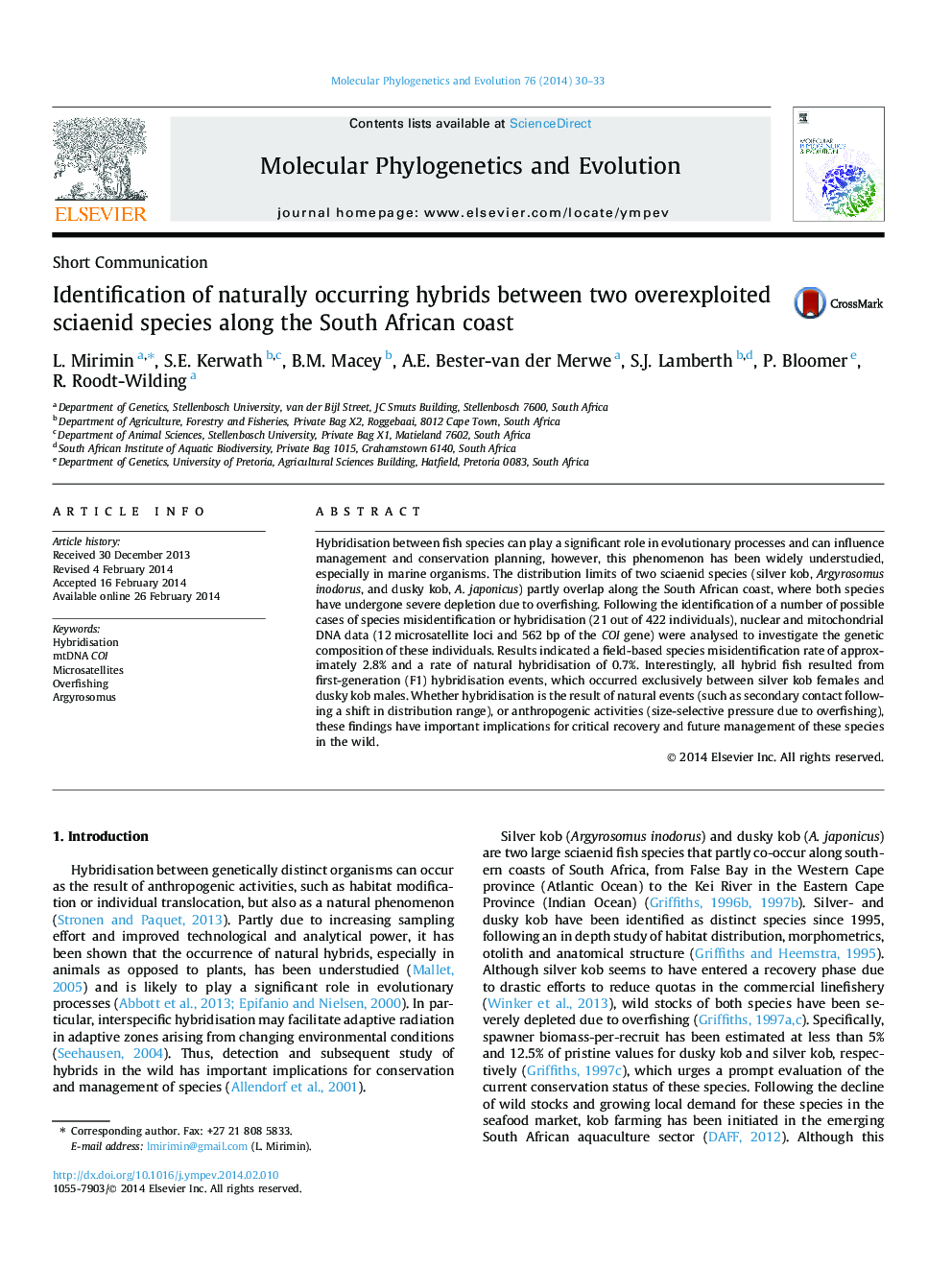| Article ID | Journal | Published Year | Pages | File Type |
|---|---|---|---|---|
| 2833894 | Molecular Phylogenetics and Evolution | 2014 | 4 Pages |
•We used nuclear and mtDNA data to study two wild South African sciaenid species.•Species misidentification rate of 2.8% and natural hybridization of 0.7% were found.•Hybridization was observed only between silver kob females and dusky kob males.•These findings have implications for conservation of wild stocks and aquaculture.
Hybridisation between fish species can play a significant role in evolutionary processes and can influence management and conservation planning, however, this phenomenon has been widely understudied, especially in marine organisms. The distribution limits of two sciaenid species (silver kob, Argyrosomus inodorus, and dusky kob, A. japonicus) partly overlap along the South African coast, where both species have undergone severe depletion due to overfishing. Following the identification of a number of possible cases of species misidentification or hybridisation (21 out of 422 individuals), nuclear and mitochondrial DNA data (12 microsatellite loci and 562 bp of the COI gene) were analysed to investigate the genetic composition of these individuals. Results indicated a field-based species misidentification rate of approximately 2.8% and a rate of natural hybridisation of 0.7%. Interestingly, all hybrid fish resulted from first-generation (F1) hybridisation events, which occurred exclusively between silver kob females and dusky kob males. Whether hybridisation is the result of natural events (such as secondary contact following a shift in distribution range), or anthropogenic activities (size-selective pressure due to overfishing), these findings have important implications for critical recovery and future management of these species in the wild.
Graphical abstractFigure optionsDownload full-size imageDownload as PowerPoint slide
